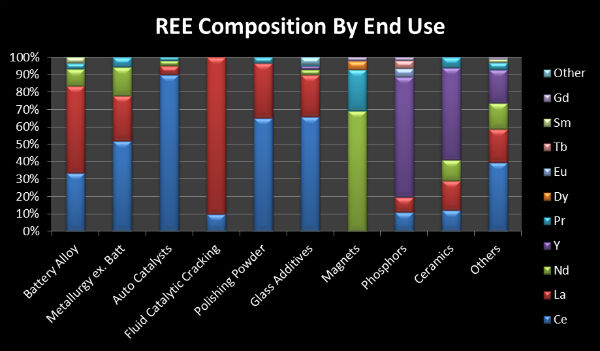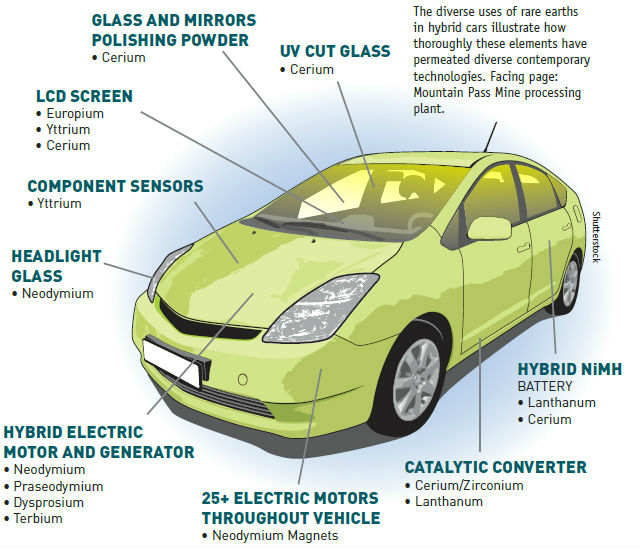 As rare earth elements are a group of 17 elements with many irreplaceable properties, rare earth metals can be widely used in many areas including magnets, catalysts, metal alloys, electronics, glass, ceramics, new materials and some other high-technology fields. As essential and functional materials, rare earth elements have been named "The Vitamins of Modern Industry". In recent years, demand for rare earth has been increasing, particularly in energy efficiency (green energy) and high-technology, and the products may not only be capable of meeting the needs of being faster, lighter, smaller and more efficient, but also play an important role in developing the industries.
As rare earth elements are a group of 17 elements with many irreplaceable properties, rare earth metals can be widely used in many areas including magnets, catalysts, metal alloys, electronics, glass, ceramics, new materials and some other high-technology fields. As essential and functional materials, rare earth elements have been named "The Vitamins of Modern Industry". In recent years, demand for rare earth has been increasing, particularly in energy efficiency (green energy) and high-technology, and the products may not only be capable of meeting the needs of being faster, lighter, smaller and more efficient, but also play an important role in developing the industries. - First, alternative energy systems such as wind power generation, fuel cells, hydrogen storage and rechargeable batteries, as well as the permanent magnets used in electric and hybrid-electric vehicles, all rely on rare earths. Next, they are used as phosphors in many consumer displays and lighting systems, and are also used in fluid cracking catalysts and catalytic converters in the oil and automotive industries and medical industry. And REE are also vital for many defense technologies, including precision guided munitions, targeting lasers, communications systems, airframes and aerospace engines, radar systems, optical equipment, sonar, and electronic counter measures.
- 1. Key applications of rare earth elements are as follows:

- Source: www.stockhouse.com
- 2. Uses of rare earth elements are as follows:

- Source: geology.com
- 3. REE composition by end use is as follows:

- Source: www.altenergystocks.com
- 4. Automotive applications

- Source: minesmagazine.com/1737
-
About us
Contact us
Make a suggestion
- Metalpedia is a non-profit website, aiming to broaden metal knowledge and provide extensive reference database to users. It provides users reliable information and knowledge to the greatest extent. If there is any copyright violation, please notify us through our contact details to delete such infringement content promptly.
 As rare earth elements are a group of 17 elements with many irreplaceable properties, rare earth metals can be widely used in many areas including magnets, catalysts, metal alloys, electronics, glass, ceramics, new materials and some other high-technology fields. As essential and functional materials, rare earth elements have been named "The Vitamins of Modern Industry". In recent years, demand for rare earth has been increasing, particularly in energy efficiency (green energy) and high-technology, and the products may not only be capable of meeting the needs of being faster, lighter, smaller and more efficient, but also play an important role in developing the industries.
As rare earth elements are a group of 17 elements with many irreplaceable properties, rare earth metals can be widely used in many areas including magnets, catalysts, metal alloys, electronics, glass, ceramics, new materials and some other high-technology fields. As essential and functional materials, rare earth elements have been named "The Vitamins of Modern Industry". In recent years, demand for rare earth has been increasing, particularly in energy efficiency (green energy) and high-technology, and the products may not only be capable of meeting the needs of being faster, lighter, smaller and more efficient, but also play an important role in developing the industries. 



